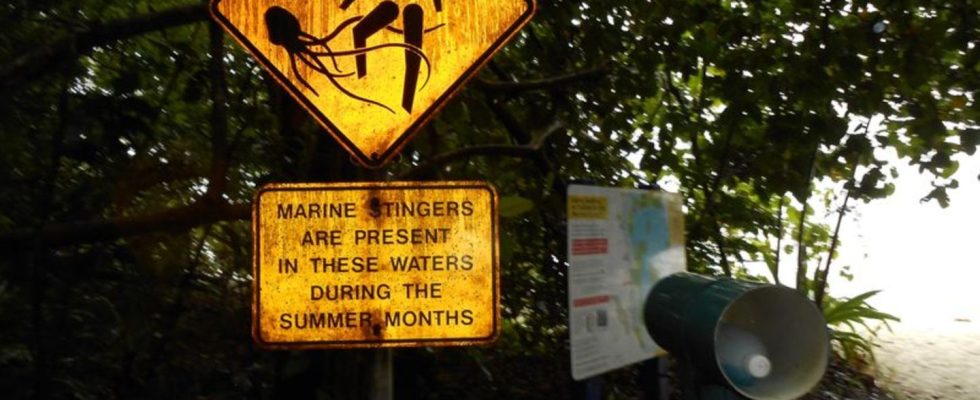Extremely dangerous
Tiny poisonous jellyfish injure six people in Australia
Signs warn of poisonous jellyfish: Irukandjis usually live in more tropical waters in the far north. Now they are causing problems on the Australian holiday island of K’gari (formerly Fraser Island). photo
© Carola Frentzen/dpa
They are tiny but extremely poisonous: The Irukandji jellyfish, which only live in Australia, are extremely dangerous for humans. There is an alarm on the holiday island of K’gari.
There is a jellyfish alarm on the Australian holiday island of K’gari (formerly Fraser Island): Within just four days, six people were stung in the sea off the island – apparently by Irukandji jellyfish. Discovered in 1961, the almost transparent box jellyfish (Carukia barnesi) have a diameter of only about one to two centimeters but tentacles up to a meter long. Several children were among the injured, the news site News.com.au reported, citing rescue workers.
Most of the injured had to be flown by rescue helicopter to Hervey Bay Hospital on the mainland. The mother of an eight-year-old victim told 9News that her son was screaming in pain. “He started vomiting and said he couldn’t feel his leg. It was scary.” Visitors to K’gari have been advised not to swim further in the area.
Poison can cause syndrome
The nettle poisons from Irukandjis can trigger the so-called Irukandji syndrome. The poisoning is primarily noticeable through severe abdominal, chest and back pain. Without medical care, the symptoms are life-threatening.
Irukandjis typically live in more tropical waters in far north Queensland and the Northern Territory. However, certain currents could cause the jellyfish to migrate further south, it said. Experts fear that climate change could push them even further south in the future.
K’gari, off the coast of Queensland, is the largest sand island in the world and popular with tourists from around the world. The beaches attract with white sand and crystal clear water – but in addition to jellyfish, there are also sharks, deadly spiders and dingoes on the dream island.

